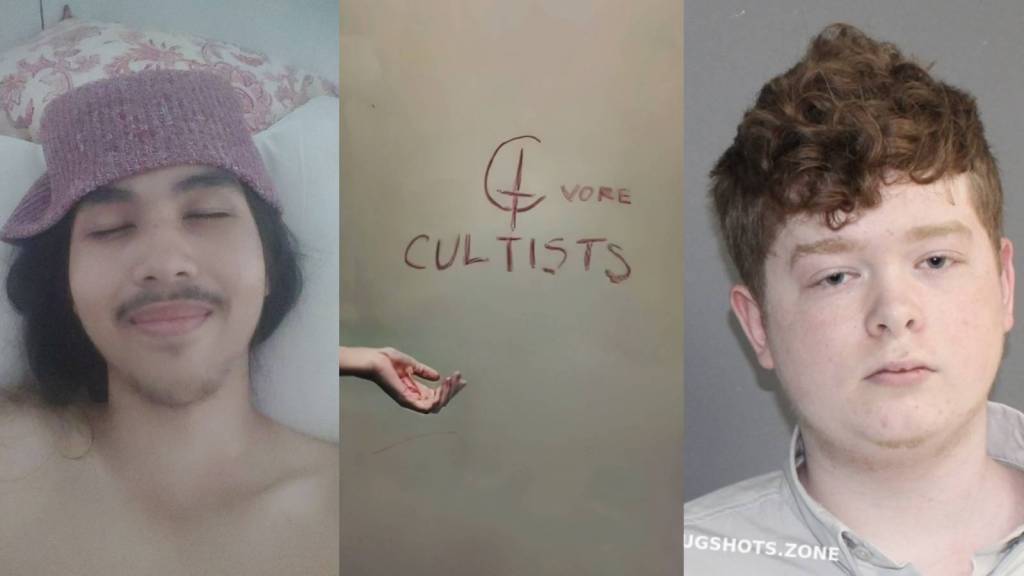When it comes to mind-fucks, few things top incest.
Inter-familial relations have become topical recently following a New York magazine article about genetic sexual attraction (GSA) and a detailed Q&A about consensual incest between a woman and her biological father. The general consensus was, “There’s not enough :(‘s in the world for this,” because incest is a phenomenon so taboo we barely have the language for it.
Videos by VICE
Naturally, as with pretty much any other sexual or societal taboo you can think of, there has long been a market for “incest” scenes in porn—”daddy-daughter” scenarios, for example, acted out between two perfect strangers for the titillation of masturbators who want to go a bit… darker. But that audience has—in certain areas of the US, at least—grown.
A report by leading multimedia-adult-content providers GameLink.com revealed a 178 percent average increase in the consumption of “family role-play porn” between October 2014 and January 2015. The stats show Utah had the highest increase with 765 percent; Michigan (698 percent), New York (669 percent), Alaska (524 percent), and Arkansas (452 percent) made up the five states where incest porn was growing in popularity the fastest.
According to GameLink, the ten most popular family role play porn titles are: Father’s Forbidden Fantasies, Friends and Family 4, Mother’s Indiscretions #3, Keep It in the Family, Brothers & Sisters 2, Mommy and Me #9, Lesbian Family Affairs, Father’s Day, Digital Sin, Sibling Sex Stories, and, most sinister of all for some reason, Our Father.
That’s an awful lot of studios making an awful lot of incest action. I reached out to Dr. Chauntelle Tibbals, author of forthcoming book Encore: A Sociologist Explores Sex, Society, and Adult Entertainment, for some kind of explanation.
Tibbals assured me that the stats don’t show an increase in “incest porn,” as such, but rather a “rapid growth” in “faux-cest porn”—content that casts two performers in a family scenes. She attributed the popularity of such porn in certain geographical areas to those “states that are a bit more on the sexually repressive side,” marking New York as an anomaly.
She also suggests that the appeal of faux-cest pornography can be found in the “interesting mix of commonplace coupled with marked taboo.”
“Intimacy between step-relations is very taboo in contemporary US culture, and yet many people live in step-blended families,” she says. “There’s something about stimuli for such a highly taboo topic simultaneously being so commonplace that may resonate with some people. In terms of ‘why now,’ certainly technology, accessibility, and the availability of the content itself all play a part.”
A lot of “incest” porn takes great pains to make sure viewers know the sex may be real but the relationships aren’t. Take Mommy and Me 9 (2014), for instance. At the start of each scene, the performers issue a disclaimer saying that they’re not related. Before the first scene, Chasey Lain says, “This is in no way my daughter, we’re not related in any way.” Audrey Aguilera replies with, “And this is not my mother. I just met her today.”
Lain ends the fourth-wall-breaking intro with the following words: “We’re giving the fans what they want— Mommy and Me 9.” But is incest really what the fans want? Or is it just what the porn industry is peddling?
In 2013, Jon Milward produced Deep Inside: A Study of 10,000 Porn Stars and Their Careers, and his analysis threw up some interesting facts and figures. Out of the 20 “most common female roles that appear in film titles, ranked by frequency of use, the sixth-most common role for actresses is “daughter.” The tenth is “sister.”
One of the movies included in Milward’s study would have been the 1980 classic, Taboo. The plot, in truly the loosest sense of the word, heavily features father-daughter and mother-son incest. Taboo is regarded as a classic and went on to be the first of many in a series spanning 27 years and knocking out—if you will—22 sequels.
It feels like quite a stretch to assume that someone just typing in the most taboo sexual scenario they can think of into a porn search engine actually wants to fuck a family member.
Evidently, incest porn is nothing new. But as with all modern day smut, its ubiquity goes beyond the usual channels of adult content. Search online for “incest” and you’ll find tons of filth: Reddit forums with 44,000 readers (with the following disclaimer: “Owing to the general lack of ability to verify content, all stories should be assumed to be fictional unless proven otherwise”), incest erotica, even the portmanteau “wincest“—which refers to fan-fiction depicting “a romantic or sexual relationship between Sam and Dean Winchester,” from the sci-fi series Supernatural.
The more you look, the deeper the rabbit warren goes. Could content of this kind really be reflecting our subconscious desires? If we think back to college psychology classes and consider Freud’s Oedipus complex theories, you could argue that watching incest porn is simply an act of wish fulfillment. Still, it feels like quite a stretch to assume that someone just typing in the most taboo sexual scenario they can think of into a porn search engine actually wants to fuck a family member.
However, in his notorious Penthouse article from 1977, Incest: The Last Taboo, Philip Noble suggested that there’s much more actual “untraumatic” incest happening than we care to accept. Yes, it was the 70s, and yes, he relied heavily on the idea of “previously suppressed material” from the original Kinsey interviews that “tells us that incest is prevalent and often positive,” but he was right when he said that “incest will be a major social issue in the 80s”—the decade that spawned the Taboo series.
A sinister explanation for incest-themed porn was offered in psychologist Sharna Olfman’s 2008 book The Sexualization of Childhood, in which she suggests that there could be a correlation between father-daughter gonzo and what she calls “pseudo child pornography” (PCP).
“We can explore,” she writes, “how these sites may act as socializing agents for their users by constructing a particular set of ideologies that normalize children as legitimate sexual partners for adult men.” The norms and values circulating in society that define adult-child sex as deviant and abusive are wholly absent in PCP, she argues, and in their place is a “cornucopia of sites that deliver the message that sex with children is hot fun for all.”
Olfman’s argument is gut-churning, but if we’re talking specifically about the films readily accessible on PornHub/XHamster/YouPorn, etc., we are not talking about actual incest. That much is made clear in the disclaimers. But it doesn’t make the titles or pseudo subject matter shocking. There’s a base, primal curdling of the stomach that happens when you see any kind of mother-son or daughter-dad set-up, even if you know it’s fictional, and it’s precisely that reaction that an industry gorging itself on the extreme feeds upon. From rosebud to gokkun, incest-themed porn is just another obscenity to get customers through the doors.
Dan O’Connell, founder of Girlfriends Films—a company that produces one of incest-themed porn’s most popular and successful series in Mother-Daughter Exchange Club (now on its 36th edition)—says it’s all just about pushing boundaries.
“Producers of adult movies are among the greatest mavericks of society,” he says, without a whiff of irony. “It is their nature to leave the realm of conventional sex and depict the very outer edges of sexual behavior. Today, every unsupervised kid with an online connection can look at all the sex they want.”
That might be true. But what about the implications of those kids then going on to crave something more outrageous than the last thing they saw? Isn’t that kind of one-upmanship precisely what the porn industry is feeding? How can it be right that they’ll somehow end up viewing fictional scenarios between mothers and sons?
O’Connell is ambivalent. “The industry does these movies because that’s what sells.,” he says. “And, very simply, they sell for their taboo factor.”
Follow Gareth on Twitter.



